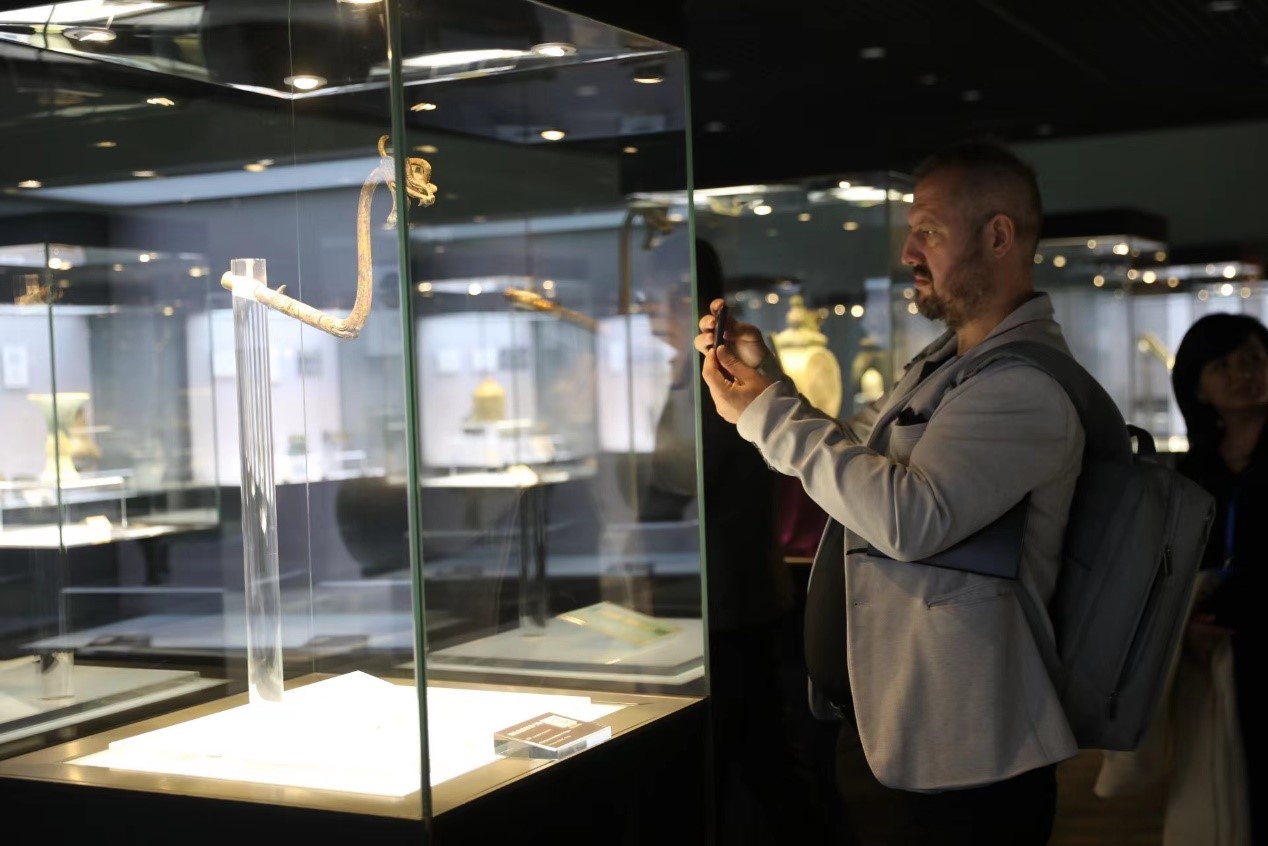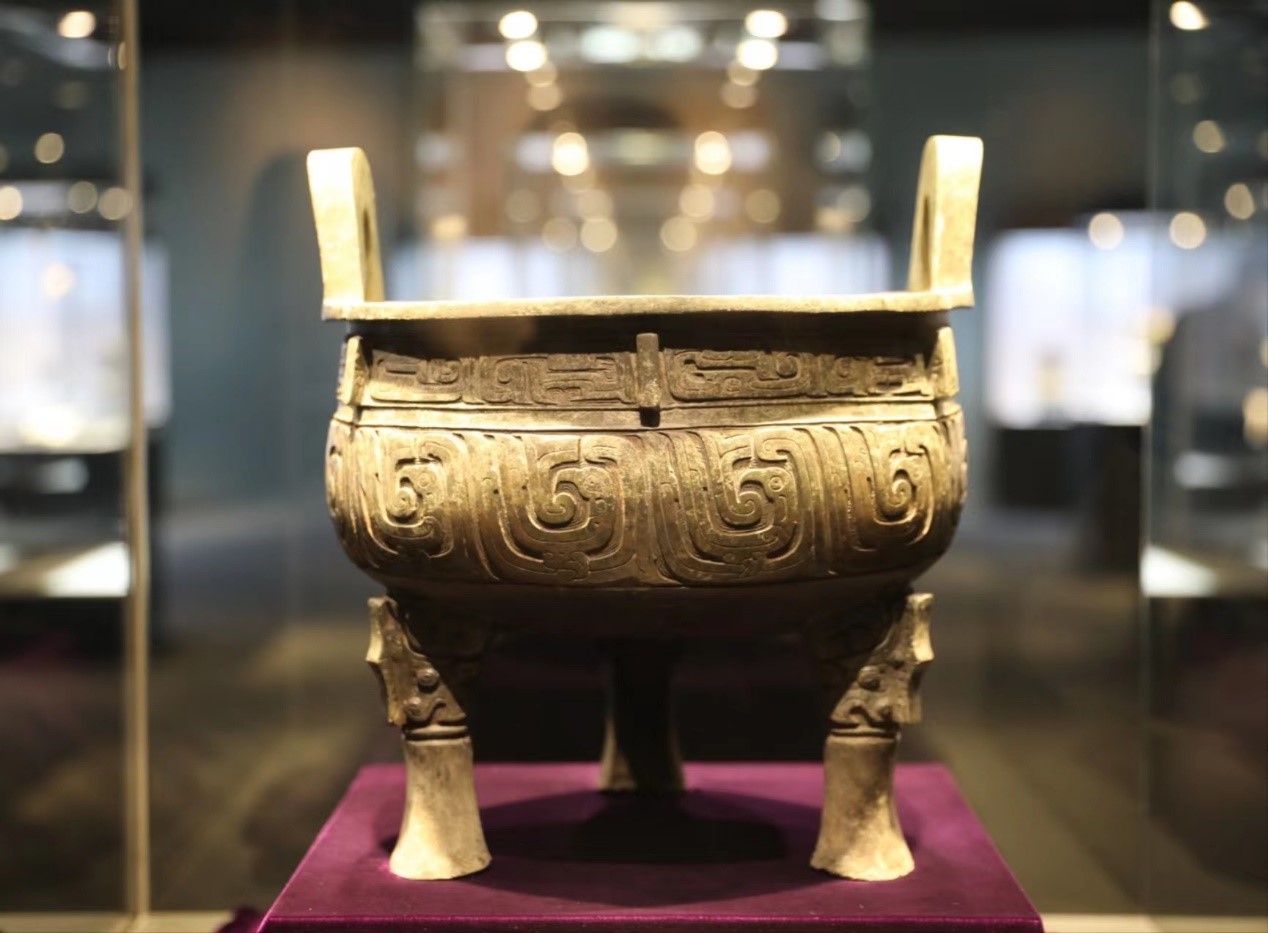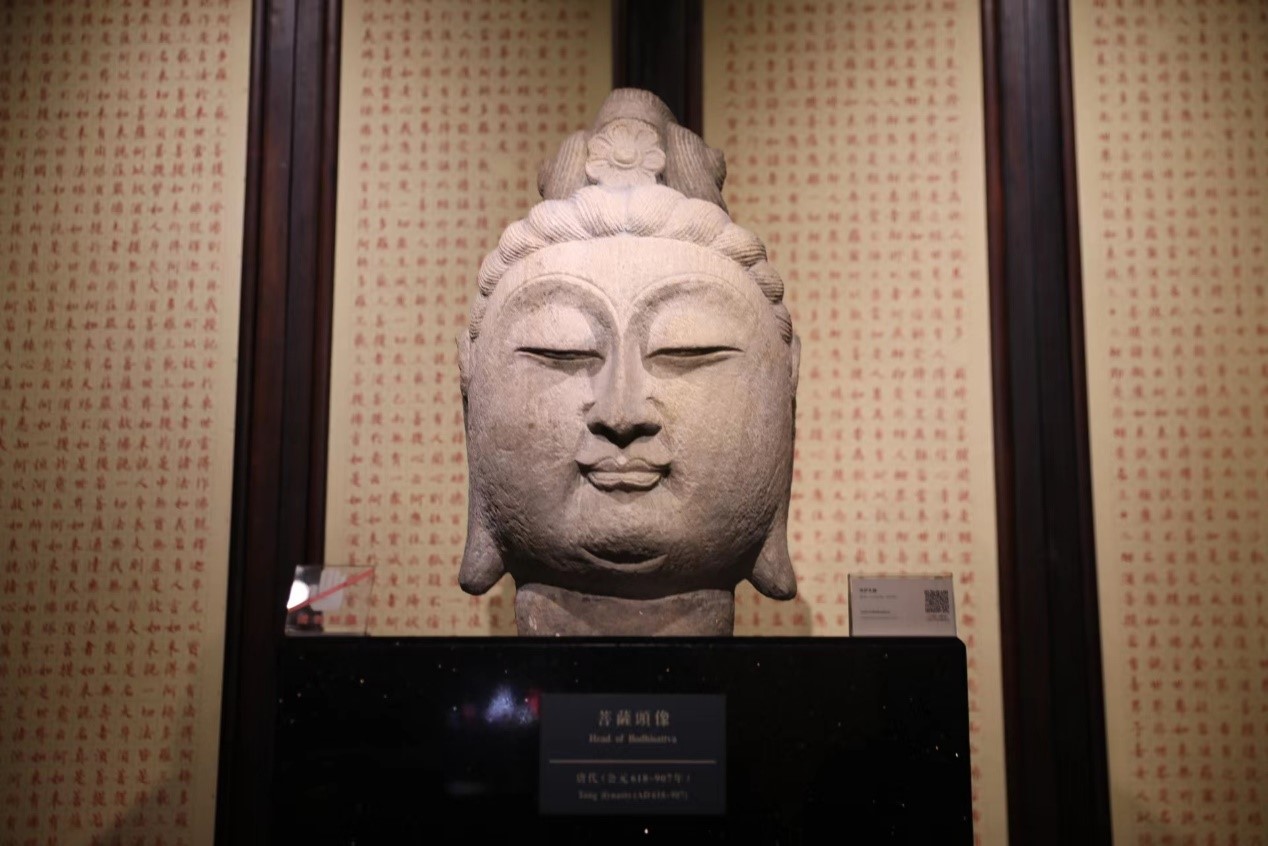Media representatives marveled at the exquisite ancient bronzes and vivid Buddha statues on display Thursday at the Poly Art Museum, one of Beijing's finest, on the ninth floor of the Poly Plaza office building in downtown Beijing.
The museum Friday welcomed a delegation of recipients of the first Silk Road Global News Awards, honored for their promotion of the Belt and Road Initiative (BRI).

Faruk Borić, executive director of the Center for the Promotion of Belt and Road Initiative in Bosnia and Herzegovina, photographs an artifact. (Photo: Liang Xiaojian)
There are two exhibition halls showcasing ancient bronzes and Buddha figures at the museum.
While listening to a guide, delegation members showed eagerness to get closer and photograph the artifacts.
"Every time I visit Chinese museums, I am impressed as China is a very big culture and big civilization," said Branko Zujovic, a journalist from Pecat Weekly in Serbia. "Artifacts in Chinese museums are very old and we cannot find so many in Europe."

The eye-catching wangzuo zuoshou ding at Poly Art Museum in Beijing. (Photo: Liang Xiaojian)
The wangzuo zuoshou ding is one of the most attractive artifacts at the museum. Made in the Western Zhou Dynasty (1046 BC-771 BC), the tripod cauldron is a three-legged vessel for sacrificial rituals decorated with fine curling clouds and 12 phoenix and bird motifs.
The museum also houses a collection of exquisite Buddha statuary which captured the attention of Faruk Boric, executive director of the Center for the Promotion of Belt and Road Initiative in Bosnia and Herzegovina.
"I'm a journalist, but my master's is in the sociology of religion," Boric said. "Now in the museum I learn from the first source, not from the English or Bosnian books, which are second or third sources."
He found it interesting to learn the background information on different styles of Buddhas from the long history of Buddhism in China.

A head of the Bodhisattva made in the Tang Dynasty (618-907) is displayed at the Poly Art Museum. (Photo: Liang Xiaojian)
"Our civilizations are different," said Zujovic, the Serbian journalist. "It's obvious, but it's also important to find the similarities."
He hoped more young Chinese people and young Balkan people could visit each other's country in the future, Zujovic said.
This year marks the 10th anniversary of the Belt and Road Initiative. The delegation believes that cultural exchanges are essential to further promote cooperation among Belt and Road partners.
"If we don't know each other, it can create only fear and prejudice," said Boric. "It's crucial to invite the young generation to know more about each other."
Poly Art Museum was founded in 1998 to display traditional Chinese culture and art.
Cultural relics are the physical symbols of cultures and national identities, said Wan Liqun, museum executive deputy director. The visit would play a positive role in spreading Chinese culture and cultural exchanges among Belt and Road partners, he said.


